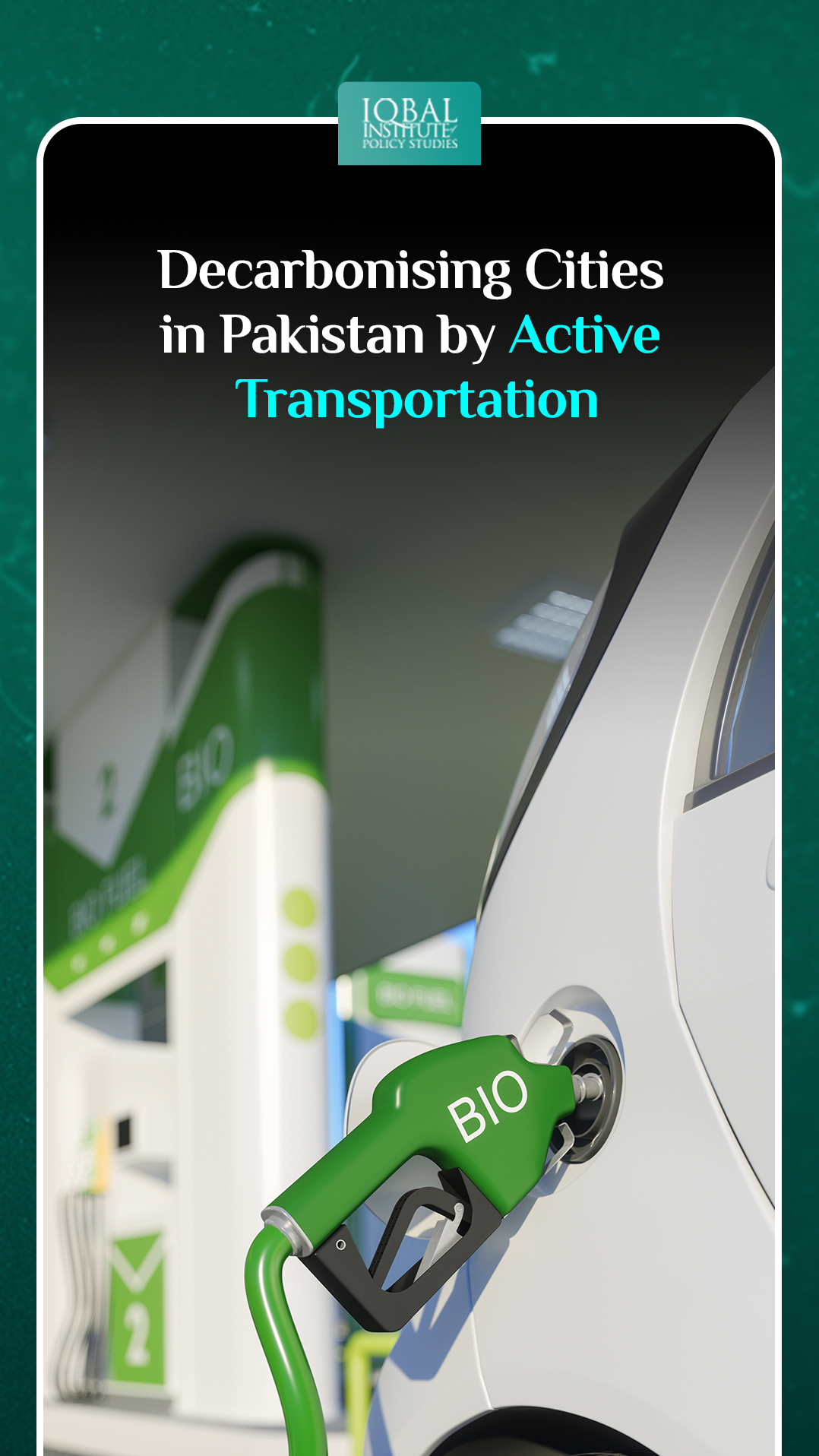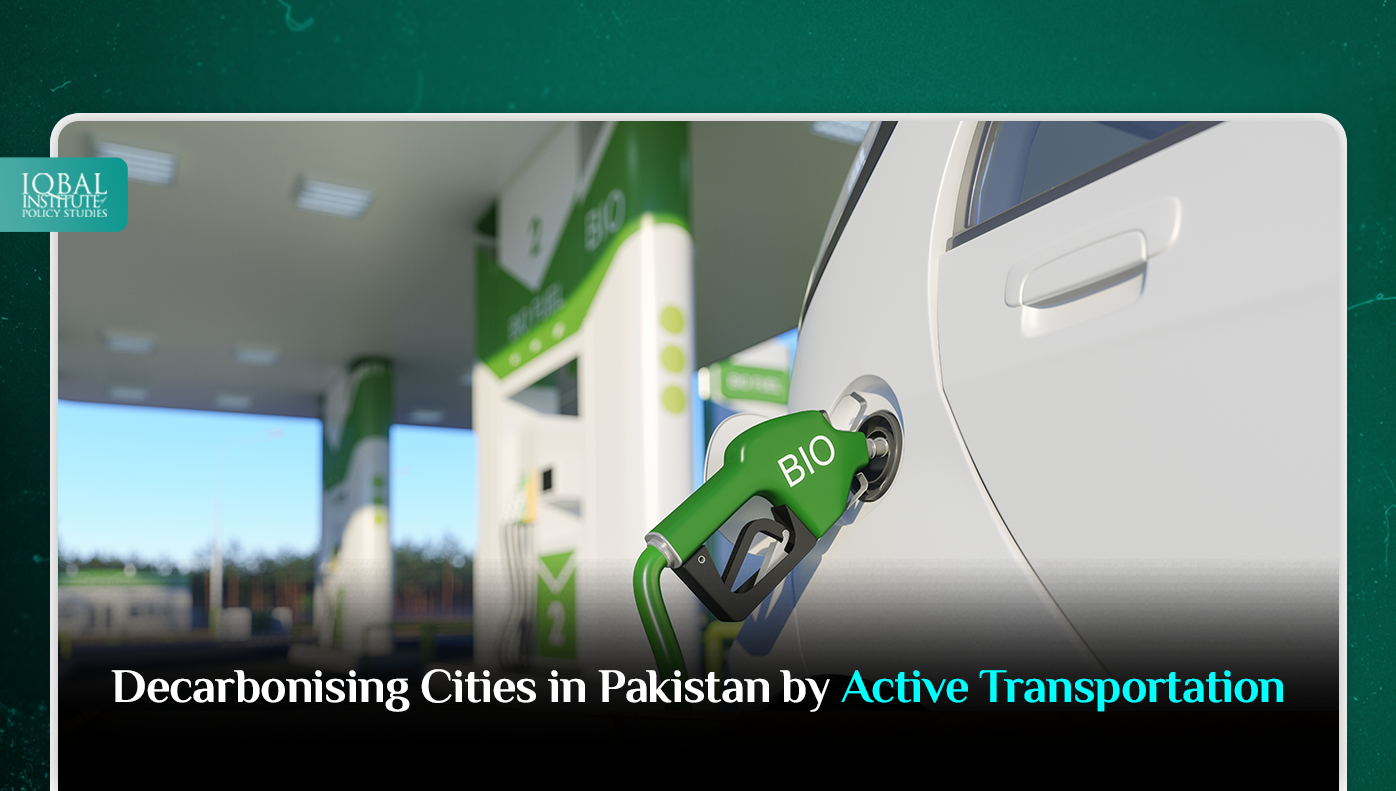Urban transport is one of the driving factors for the growth in greenhouse gas (GHG) emissions. However, the transport sector is often overlooked when curbing the issue of climate change. Owning to the ominous threats of global warming, one way of decarbonising the cities is through active transport, which refers to walking, cycling, e-bikes, and other modes of transportation that contribute to low emissions. Active transportation provides people with active lives that lead to health, social, and economic benefits. Also, this mode of transportation leads to better accessibility for low-income individuals in cities by connecting them with more resources, services, and opportunities. While more green developments in the transport sector are emerging, market uptake is slow, especially in developing countries.
Moreover, urban infrastructure that supports active transport still needs to be funded, despite its proven cost effectiveness and urgent need. Therefore, transport stakeholders need intelligent policies to effectively transform the transport sector and increase investments in climate-smart mobility. Decarbonising this sector is a pressing need of time and will be instrumental in winning the global race against climate change.
Benefits of Active Mobility/Transportation
Economic and Social Justice
Countries with standard quality walking and cycling networks contribute towards social and economic justice since it responds to the needs and commute of low-income individuals. Moreover, active mobility projects unlock the health, environmental, and economic benefits of low-carbon lifestyles among the poorest residents. Access to economic, employment, education, and cultural opportunities is also enhanced regardless of scarce finances.
Reduces Traffic Congestion
Cities can improve economic performance and social productivity by reducing congestion. According to UN-Habitat, developing countries in Asia lose two to five per cent of their annual GDP to congestion (The World Bank, 2021). However, an active transportation system contributes towards reduced traffic and parking congestion, more reliable travel times, and increased public transport ridership.
Fewer Carbon Emissions
60% of GHG emissions are produced by cities, whereas one-third of these emissions emanate from urban transport (The World Bank, 2021). Investments in and implementing an all-inclusive, active mobility network in urban centres can significantly cut the carbon footprint and reduce energy consumption. According to a study, if people switch just one trip per day from driving to cycling, they will reduce their carbon footprint by 67%, about 0.5 tons per year (Imperial College London, 2021).
Health Benefits
Lack of physical activity is a leading risk of noncommunicable diseases. However, an active transport system assures health benefits, improves air quality and promotes social connectivity. Also, protected bike and walking lanes get more people in the saddle, burning calories, clearing minds, and strengthening hearts and lungs. According to a study, people who live in neighbourhoods with shops and retail establishments within walking distance have a 35% lower risk of obesity (MacCleery, McMahon, & Norris, 2016).
Boost’s Tourism Economy
Cities with an active transport system boost the tourism economy and encourage extended stays and visas. The radical shifts in climate have made people more aware and sustainable in their choices. They prefer countries which practice sustainability. Thus, active mobility can help tourism-oriented communities maximise the benefits of tourism while minimising burdens such as traffic congestion. For example, Bike-friendly destinations in Massachusetts have reduced the need for large, unsightly, and expensive motor vehicle parking lots by constructing a network of off-road bike paths that provide easy access to island beaches and other attractions (MacCleery, McMahon, & Norris, 2016).
Why does Pakistan Need Active Transportation?
Pakistan is the most urbanised country in South Asia. The urban population of Pakistan is growing by 3% per year, and by 2030, more than half of the population is expected to live in cities (LSE, 2017). Despite the rapid urbanisation, most of the mega cities in the country lack a mass public transport system. Low-income individuals who cannot afford exceedingly expensive private transportation are forced to live in unplanned areas of cities. Moreover, increased motorisation and poor urban planning have led to severe congestion and air pollution. Congestion in urban areas lessens the competitiveness of the country’s exports, increases the cost of doing business, and restricts Pakistan’s capability to integrate into global supply chains. The government has upgraded and expanded many urban roads to tackle this issue. However, infrastructure for Pakistan’s most common modes of travel, such as pavements for walking or special lanes for bicycles, either do not exist or have been encroached upon. For instance, 40% of the trips made in Lahore are on foot, yet the city lacks footpaths or bicycle lanes (LSE, 2017). The transport sector of Pakistan emits 70% of carbon emissions (Lin & Raza, 2020). Pakistan’s ecosystems already face acute threats, and the expansion of transport infrastructure could aggravate them.
Furthermore, an increase in traffic results in traffic accidents which generate high economic costs. In 2021, 10429 traffic accidents were caused, of which 4721 were fatal, and 5708 were non-fatal (Pakistan Bureau of Statistics, 2021). Also, Pakistan’s 2021 air quality index is unhealthy, with a PM2.5 concentration that is 13.4 times the WHO annual air quality guideline value (IQAir, 2022). The transport sector is responsible for 20% of global GHG emissions, which is expected to increase to 60% by 2050 if no immediate action is taken (The World Bank, 2022). Therefore, the government needs to invest in an all-inclusive active transport system to promote easy commutes and reduce carbon emissions. Reducing vehicle use will be a big challenge for a developing country like Pakistan since it requires society-wide behavioural changes. Hence, creative financing and Innovation around active transport is one way to achieve this.
Ways to Decarbonise Cities via Active Transportation
Providing Mass-Public Transport Systems
Existing transport routes in the cities of Pakistan are decades old, whereas the city size and population have grown greatly and are expected to grow further in future. The government needs to re-examine the transport route system focusing on an inclusive bus-based transport system for the mass public. This will reduce the number of private motorised vehicles on the road. Moreover, mass public transport systems should be made safe, efficient and appealing to break the decades-old motorisation dependence and prioritisation by individuals, businesses and governments.
Building Infrastructures for Walking and Cycling
Walking and cycling are the greenest modes of transport. 35% of most urban trips are 5 kilometres or less, and 50% are 10 kilometres or less (World Economic Forum, 2022). However, in most places, active mobility is not the leading mode of transport. The reason for this may be high road accidents due to congestion in urban areas. Building infrastructures for walking and cycling within the cities are inexpensive and convenient investments in the transport sector. Creating safe infrastructure for active mobility with connection to key locations and transit stations, like permanent, well-designed bike and walking lanes, can protect users and attract new ones. For example, Paris lowered its driving speed limits to 30 km/h and added 50 km of pop-up bike lanes, which boosted the number of cyclists. The city plans to install another 180 km of permanent bike lanes by 2026 (World Economic Forum, 2022).
Prioritise Active Transporation Infrastructure Budgets
Governments normally invest in car-centric projects, whereas active modal projects are not prioritised. The government and the private sector should realise the significance of active transportation, which not only caters to the safety of pedestrians but can also lessen the pace of climate change. Also, it enhances the quality of life in cities by making them more liveable. Therefore, infrastructure budgets for an active modal system should be noticed.
Use Innovation to improve the quality of Mass and Active Transportation
Mass transport and active transport use can reduce fossil fuel consumption and lower carbon emission from the transport sector. However, individuals only opt for such means of transport when services are affordable, high-quality, and reliable. To reduce the motorisation rate, public transportation providing up-scale services should be made cheap and accessible for all. Moreover, the government should impose parking fees in all cities to encourage the mass shift from private to public transport and enhance the use of an active transportation system.
Conclusion
Severe climate change has grabbed the attention of policymakers and international organisations around the globe, who are coming up with effective strategies to mitigate its effects. However, the transport sector, one of the causes of GHG emissions, is often overlooked. Therefore, introducing an active transport system in rapidly urbanising cities can play a crucial role in decarbonisation and lessening the pace of climate change. Moreover, it will result in economic productivity and social prosperity in the long run.



Leave a Reply